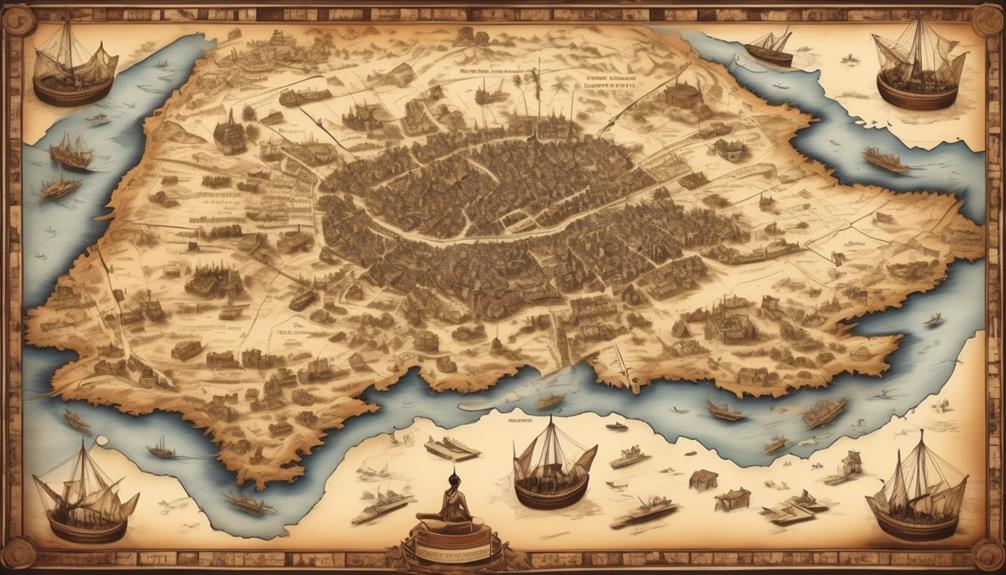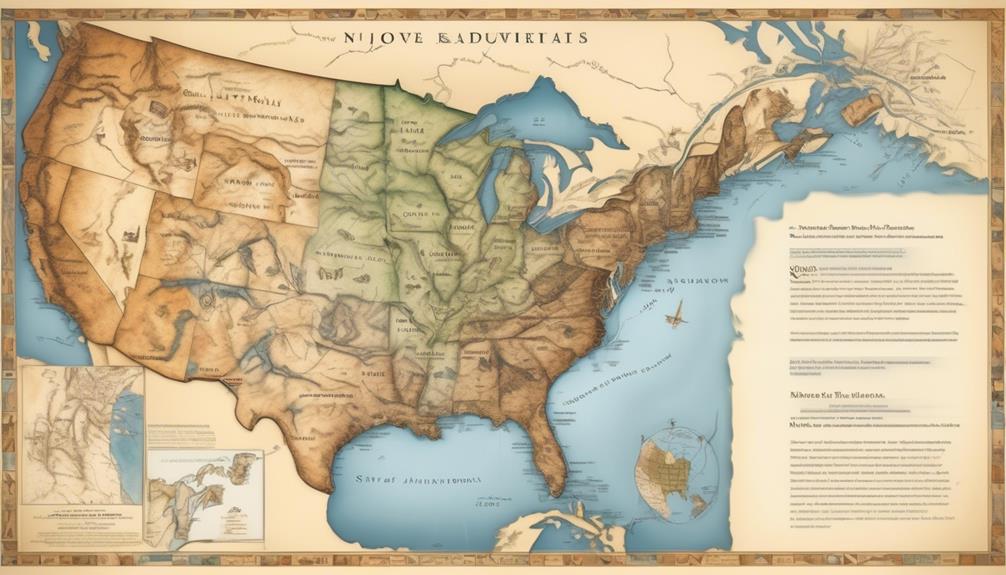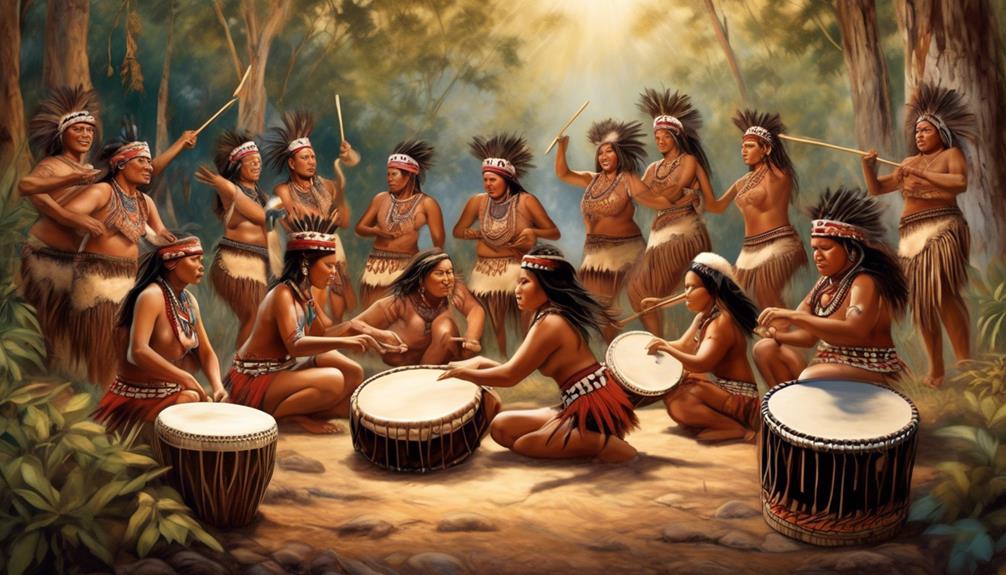It is interesting how colonial administrators continually turned to reorganizing indigenous populations.
The motives behind such reorganization are complex and multifaceted, often stemming from a combination of economic, social, political, and cultural factors.
These actions, though often justified as attempts to bring order and progress, had far-reaching consequences that continue to shape the world we live in today.
Understanding the driving forces behind these reorganizations offers valuable insights into the dynamics of power, control, and resistance in colonial contexts.
Key Takeaways
- Colonial administrators often reorganized indigenous peoples in order to assert political dominance and governance over them. This involved implementing legal and administrative structures, imposing colonial laws and regulations, and superseding indigenous customs and traditions.
- Economic exploitation played a significant role in the reorganization of indigenous peoples by colonial administrators. This included coercive labor practices, debt bondage and slavery, unfair trade terms, and the depletion of communities, all of which hindered the economic development of indigenous communities.
- Social control and assimilation were key motivations for the reorganization of indigenous peoples. Colonial administrators forced the adoption of language, religion, and customs, suppressed indigenous languages, beliefs, and practices, and disrupted traditional social and political systems. They also removed indigenous children for education in colonial institutions.
- Cultural hegemony and religious conversion were used by colonial administrators to diminish indigenous cultures and traditions. They imposed the colonizers' language, education system, and legal and social structures, and engaged in religious conversion through missionary work and the establishment of religious institutions, thereby supplanting traditional spiritual systems with the colonizers' religion. Indigenous resistance against cultural hegemony and religious conversion was common.
Economic Exploitation
Colonial administrators systematically exploited the economic resources of indigenous peoples for the benefit of the colonizing powers, often through coercive labor practices and unequal trade relationships. Labor exploitation was a common strategy employed by colonial powers to extract resources from indigenous populations. Indigenous people were often forced into labor through systems of coercion, such as debt bondage or outright slavery. This not only deprived them of their freedom but also led to the depletion of their communities as able-bodied individuals were taken away from their families and traditional livelihoods.
Additionally, the trade relationships between the colonizers and indigenous peoples were characterized by a significant trade imbalance. The colonizers imposed unfair trade terms that heavily favored their own interests, leading to the exploitation of indigenous resources without adequate compensation. This trade imbalance further marginalized indigenous communities and hindered their economic development.
Understanding the historical context of labor exploitation and trade imbalances is crucial for comprehending the enduring economic disparities faced by indigenous peoples today. These exploitative practices have had long-lasting impacts on indigenous communities, shaping their economic realities and contributing to ongoing challenges in achieving economic sovereignty.
Social Control and Assimilation

Social control and assimilation tactics were systematically employed by the colonial administrators to reshape and subjugate indigenous communities, impacting their cultural and social fabric. The strategies used aimed to integrate indigenous peoples into the colonial society while eroding their cultural identity and traditions. This approach was often driven by a belief in the superiority of the colonizers' culture and a desire to create a homogenous society under colonial rule.
| Social Integration | Cultural Preservation |
|---|---|
| Forced adoption of the colonizers' language, religion, and customs | Suppression of indigenous languages, beliefs, and practices |
| Imposition of colonial laws and governance structures | Disruption of traditional social and political systems |
| Encouragement of intermarriage between indigenous people and colonizers | Removal of children from indigenous communities for education in colonial institutions |
These measures were aimed at breaking down the existing social structures and cultural norms of indigenous communities, making them more amenable to the goals and governance of the colonial authorities. The impact of these tactics on the indigenous communities was profound, often resulting in the loss of language, traditions, and social cohesion, while simultaneously fostering a sense of alienation and marginalization.
Land Acquisition and Resource Extraction
How did the colonial administrators acquire land and extract resources from the indigenous peoples?
Land acquisition and resource extraction by colonial administrators were often marked by forceful dispossession and exploitation. The methods employed were often detrimental to the indigenous peoples and the environment, perpetuating long-lasting consequences.
- Forced displacement: Colonial administrators frequently used coercive tactics, such as legal mechanisms and military force, to displace indigenous communities from their ancestral lands, often with little to no regard for the indigenous peoples' land rights.
- Resource exploitation: Once in possession of the land, colonial administrators would exploit natural resources for economic gain, often without consideration for the environmental impact. This led to severe degradation of the land, water sources, and ecosystems, affecting the indigenous peoples' traditional ways of life.
- Labor exploitation: Indigenous peoples were often forced into labor to extract resources, further exacerbating their marginalization and contributing to the overall exploitation and degradation of their lands.
The colonial administrators' focus on land acquisition and resource extraction, driven by economic interests, significantly disrupted the indigenous peoples' relationship with their land and had lasting environmental and social impacts.
Political Dominance and Governance

Political dominance and governance were firmly established by the colonial administrators through the implementation of legal and administrative structures that upheld their authority over the indigenous peoples. Power dynamics played a pivotal role in this process, as colonial authorities sought to assert their sovereignty and maintain control over the indigenous populations. Through the establishment of governance systems, including laws, administrative bodies, and judicial structures, the colonial administrators effectively exercised their authority and influence over the political and social spheres of the indigenous communities.
Sovereignty was a key aspect of the colonial governance framework, as the administrators aimed to consolidate their power and establish themselves as the ultimate decision-makers within the territories they controlled. This often involved the imposition of colonial laws and regulations that superseded indigenous customs and traditions, further solidifying the authority of the colonial rulers.
The reorganization of indigenous political structures and the appointment of indigenous leaders who were compliant with colonial interests also served to strengthen the colonial administrators' grip on governance.
Cultural Hegemony and Religious Conversion
Amidst the colonial administrators' efforts to exert influence, cultural hegemony and religious conversion became integral tools in shaping the social and spiritual fabric of indigenous communities.
Cultural assimilation was often pursued through the imposition of the colonizers' language, education system, and legal and social structures. This process sought to diminish the indigenous cultures and traditions, replacing them with the dominant colonial culture.
Religious conversion was another method employed to instill the beliefs and practices of the colonizers, often through missionary work and the establishment of religious institutions within indigenous territories. This conversion aimed to supplant the traditional spiritual systems of the indigenous peoples with the religion of the colonizers, further consolidating their influence.
- Cultural Assimilation: The imposition of the colonizers' language, education system, and legal and social structures.
- Religious Conversion: The instillation of the beliefs and practices of the colonizers through missionary work and the establishment of religious institutions within indigenous territories.
- Indigenous Resistance: The various forms of opposition and resilience displayed by indigenous communities against cultural hegemony and religious conversion.
Frequently Asked Questions
How Did Colonial Administrators Justify Their Reorganization of Indigenous Peoples in Terms of Economic Exploitation?
Colonial administrators justified reorganizing indigenous peoples for economic exploitation by implementing systems that allowed them to extract resources and labor. This was often framed as a means of advancing civilization and bringing economic progress to the region.
What Tactics and Strategies Did Colonial Administrators Use to Exert Social Control and Assimilate Indigenous Populations?
In their efforts to exert social control and cultural assimilation, colonial administrators employed various tactics and strategies. These included imposing new legal systems, enforcing education policies, and promoting religious conversion.
Resistance movements and indigenous autonomy were met with suppression and violence. By dismantling traditional social structures and imposing their own systems, colonial powers sought to maintain dominance and exploit indigenous populations for economic gain.
These actions perpetuated a cycle of subjugation and erasure of indigenous cultures.
What Were the Specific Methods Used by Colonial Administrators to Acquire Land and Extract Resources From Indigenous Communities?
When discussing land acquisition and resource extraction by colonial administrators, it's crucial to consider the historical context and power dynamics at play.
Strategies such as forced displacements, land seizures, and resource exploitation were commonly used. These methods were driven by the desire for economic gain and the establishment of colonial control.
The impact on indigenous communities was devastating, leading to loss of livelihoods, cultural disruption, and long-term marginalization.
How Did Colonial Administrators Establish and Maintain Political Dominance Over Indigenous Peoples, and What Forms of Governance Did They Impose?
Establishing and maintaining political dominance over indigenous peoples was a strategic endeavor for colonial administrators. They imposed forms of governance aimed at solidifying their control and influence. This involved intricate systems of power and authority, often resulting in the suppression of indigenous autonomy.
What Were the Specific Ways in Which Colonial Administrators Enforced Cultural Hegemony and Facilitated Religious Conversion Among Indigenous Populations?
Enforced assimilation was a tool used by colonial administrators to facilitate cultural hegemony and religious conversion among indigenous populations. This strategy aimed to exert social control by imposing the colonizers' culture and religion on indigenous groups.
Through reorganizing indigenous societies, the administrators sought to enforce their own values and beliefs, eroding traditional practices. This approach was a means of consolidating power and subjugating indigenous peoples to colonial rule.
Conclusion
In conclusion, it's clear that colonial administrators reorganized indigenous peoples for economic exploitation, social control, land acquisition, political dominance, and cultural hegemony.
These actions were driven by the desire for power, resources, and control, and have had lasting impacts on indigenous communities.
As we move forward, it's important to recognize and address the historical injustices that have shaped our world today.









